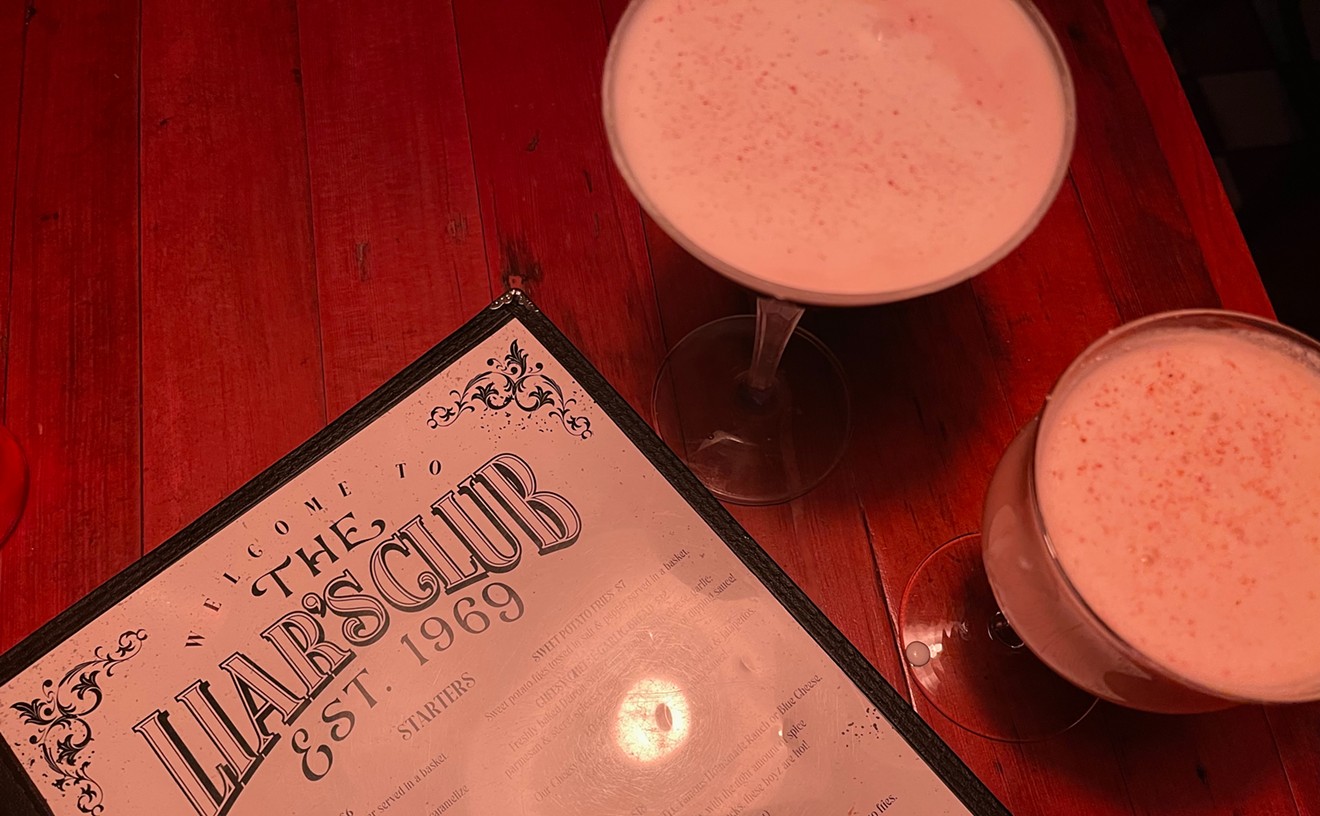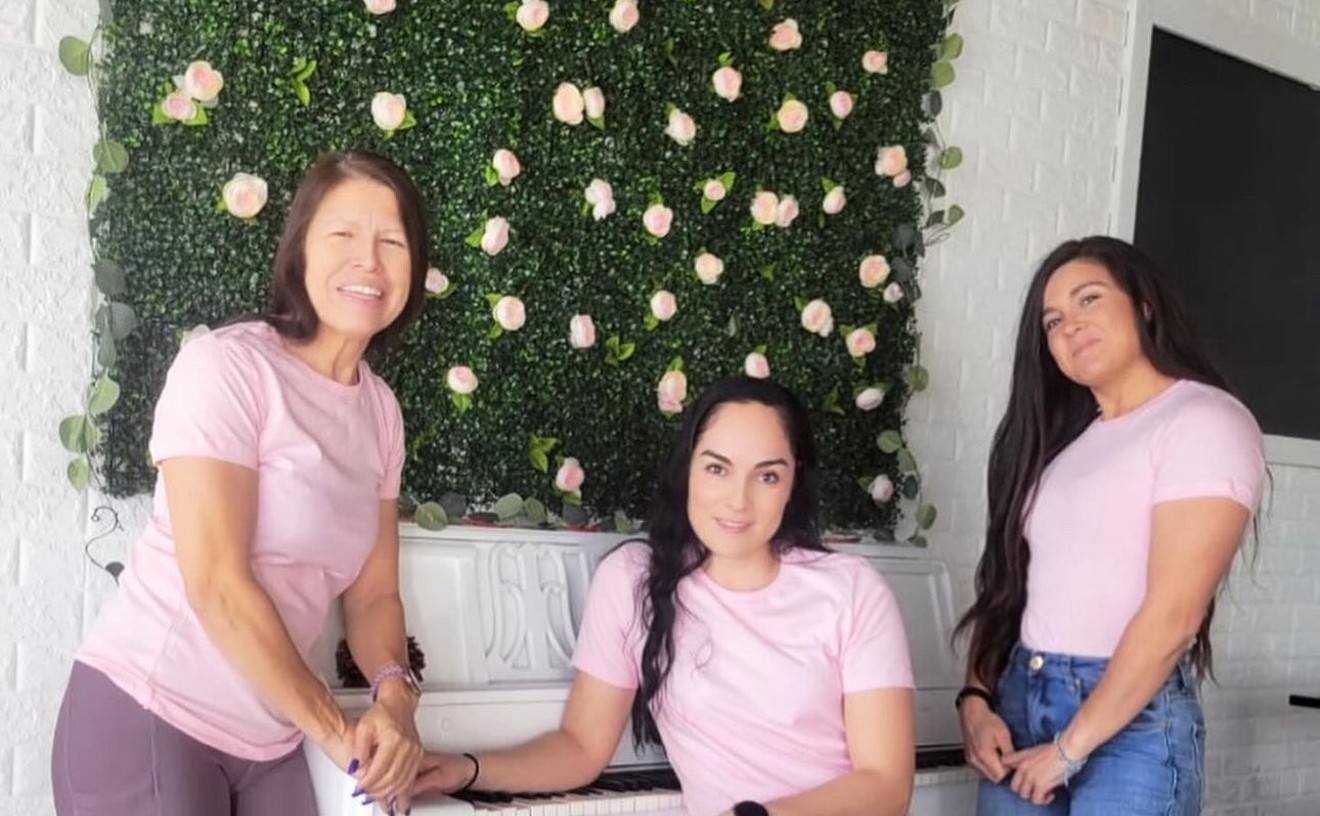"At the time, there were supposed to be three supergiants from the same quarry -- Supersaurus, Ultrasaurus and Dystylosaurus. Then, you may recall, Ultrasaurus was always said to be a giant brachiosaur, the world's heaviest dinosaur."
Pathetically enough, he's right. I do recall this. I've been a dinosaur buff for as long as I can remember, quite literally -- one of my earliest memories, from about age 3, is trying to frighten my mom with a toy Tyrannosaurus Rex. In later years, I thought seriously about a career in paleontology. So, needless to say, Brian Curtice has me spellbound. But his story hasn't made me regret my career choice.
"Supersaurus was claimed to be the world's longest dinosaur," he continues, "off of a scapula that was eight feet long. And it is . . . this thing was huge. So Supersaurus was named [by eminent paleontologist Jim Jensen] off a scapula; Ultrasaurus was named off a backbone, a dorsal vertebrae from right near the pelvis; and Dystylosaurus was named off a backbone from the front side of the pelvis. So you see, you don't even have elements you can compare against them all.
"And then Jim Jensen referred a scapula that he found seven years later in the general locality to Ultrasaurus. He said, 'That goes to that dorsal vertebrae.' No evidence of it, except that because the scapula was clearly brachiosaur, and because this dorsal vertebrae was named Ultrasaurus, which must be a brachiosaur, he referred it. So a lot of logic errors were made, and erroneous science was done."
I'll take your word for it, Brian. In a conversation full of casual references to "ventral salcas" and "lateral pneumatic focai" and other words I'm not even sure I'm spelling right, Brian Curtice stops himself to apologize for oversimplifying. I've always prided myself on an above-average layman's grasp of science, but at the moment I feel like Gilligan and the Skipper must have felt after the Professor finished one of his impenetrable spiels.
Curtice speaks with great enthusiasm, in a fast, loud, confident manner. He looks like the stereotypical science geek, but he sounds like a salesman. As it happens, at the moment, he's both. This passionately committed young scientist, who has received some national acclaim for refuting the interpretation of one of the major dinosaur discoveries of the last three decades, is an adjunct curator at Mesa Southwest Museum. But he makes his living as a computer salesman for Insight Direct. We're lunching at Manuel's near this day job, on Broadway in Tempe.
Between bites of his usual order, a red chili burro, he tells the story of the day he realized that Jensen's ideas about the three fossil bones he'd discovered in 1972 -- the year Curtice was born -- were all wrong. "One day I'm sitting in a forklift, at BYU in the museum, and it's like 2 a.m., we had the music blaring, probably Slayer or something, loud, offensive music, and as we're listening to the music, this epiphany hit me, that every one has always looked at this thing wrong, in that this Ultrasaurus holotype is not a brachiosaurus, it's actually a diplodocid! It's a Ford instead of a Chevy! I jumped off the top of this thing and started talking a hundred miles an hour, pullin' specimens down, rippin' literature, and [wife] Linda and [best friend] Dewey Ray could feel this frenetic energy, and they began thinking, 'Maybe he's right; maybe he's on to something here.'"
One piece of the puzzle needed to prove this hypothesis was missing, however -- a transverse process, the part the rib attaches to. "It had been missing for 15 years. Dewey Ray, bless his heart, climbed up into these ungodly, unreachable areas of the collection and started throwing boxes down and ripping things open, and he found the transverse process in five hours. So the sun's coming up, he produces it, and it fits on perfectly, and now we have the definitive proof, this is not a brachiosaur, so that everything that's ever been written about this animal is a lie."
Curtice points to the fragments of chips, his eyes blazing. "He [Jensen] made them all different genera, but they're all from the same individual."
The Phoenix native -- "My father was a carpenter and my mother works in a preschool; as blue-collar as it gets" -- fell in love with dinosaurs as a kid, growing up around Bell Road and 32nd Street. His favorites, then as now, were the sauropods, the long-necked, long-tailed, four-legged, plant-eating giants that most people picture when they hear the word "dinosaur." A first-rate high school student, he was given a full ride at ASU, which he chose because he didn't want to leave home.
To his frustration, however, he couldn't major in paleontology there (or at any other U.S. university at the time), and so settled for anthropology -- at least he could, in his phrase, "play with bones." Under the guidance of his mentor, sauropod authority Jack Mackintosh, Curtice went for his master's degree in geology to Brigham Young, where he was one of a handful of non-Mormon students. "I had no religious background whatsoever. I felt like Bilbo Baggins while I was there, tryin' to get the item out of Smaug's lair." It was during this stranger-in-a-strange-land period that he saw through Jensen's sauropod-size error.
Eminent scientists, however, don't like being shown up, especially by young graduate students, so Curtice was advised against challenging Jensen, with whom he and his wife were friendly. "Everyone said, 'Don't publish 'til he dies.' I said, 'Aw, that's dumb, why not just show it to him?'" At first, his faith in human nature was rewarded. "He was very excited, happy, wrote great letters of praise. I still have them. Then this thing happened." He holds up a copy of the January 1997 issue of Discover magazine, which ran a short article on Curtice's findings. The headline was "Superultrahypermegasaurus. Long, Anyway" -- a headline, Curtice claims, he had nothing to do with.
Curtice says Jensen thought the magazine was making fun of him and was insulted that Curtice kept Supersaurus instead of Ultrasaurus as the name. He wrote Curtice "one of the most scathing, hostile letters I'd ever received in my life."
The two men never made peace. "He died mad at me. I feel bad about it."
Rancor came from other quarters because the article called Curtice a paleontologist instead of a student -- he had his master's degree and was working toward a doctorate in anatomy at SUNY Stony Brook. "This caused me so much political grief. The paleontology world has a gargantuan ego. This came out, and it was like, 'Why is this student not being labeled a student? What did you tell them? What was said?'"
Despite his pride in his own scientific rigor, however, Curtice remains sympathetic to the plight of paleontologists like Jensen. "Because paleontologists have no money, the only way to get publicity is to find the E-S-Ts: the old-est, the bigg-est, the heavi-est, the long-est. 'Cause then the media pays attention, and you hopefully get more money from your university, or a corporate sponsor. So it's never just another T. Rex, it's always 'the largest T. Rex ever discovered.' It's a game."
There's nothing of the poor mouth to his attitude, however. He makes good money at Insight Direct, and his nights are free to continue his studies. He notes that the situation wouldn't be much different if he were in academia -- his days would be taken up with classes and grant-writing, and paleontology would have to wait until after hours.
Private-sector work has even given him new ideas for funding his researches. "Get some corporation to fund you, and then name your dinosaur after them. I'll call it 'FedExasaurus,' or whatever, what do I care? "










